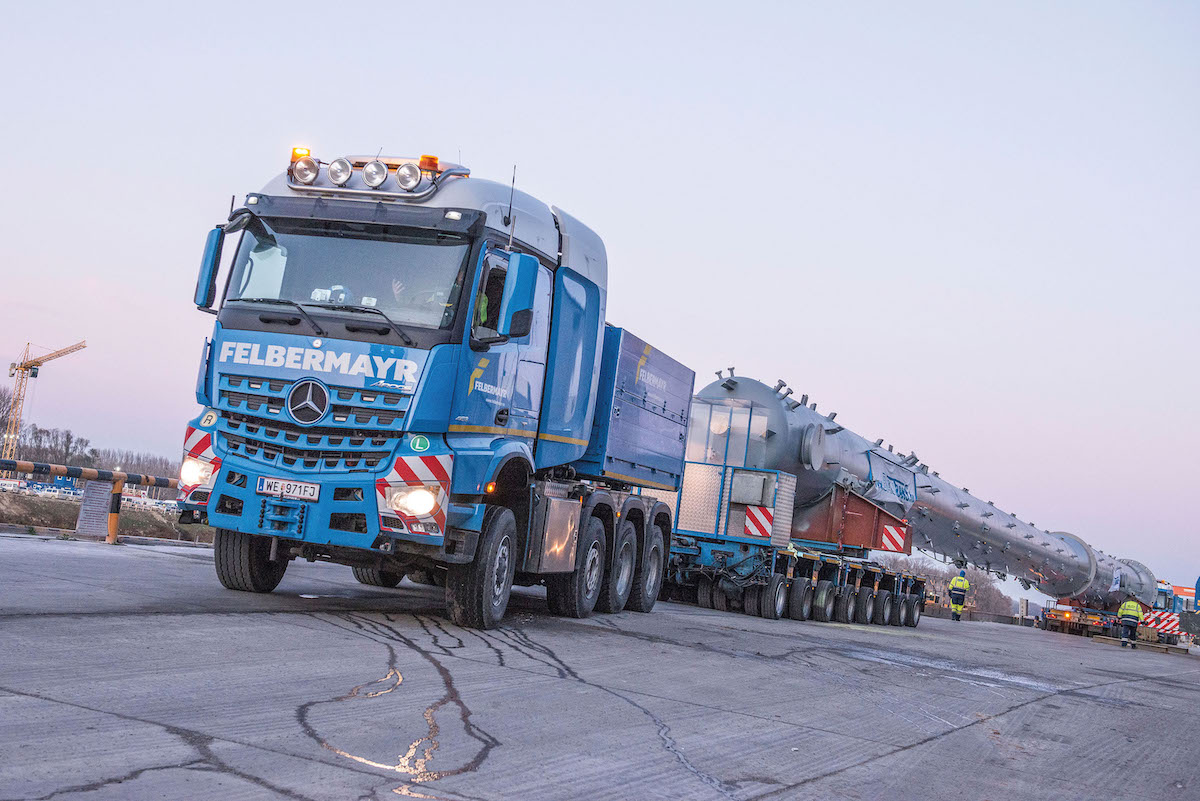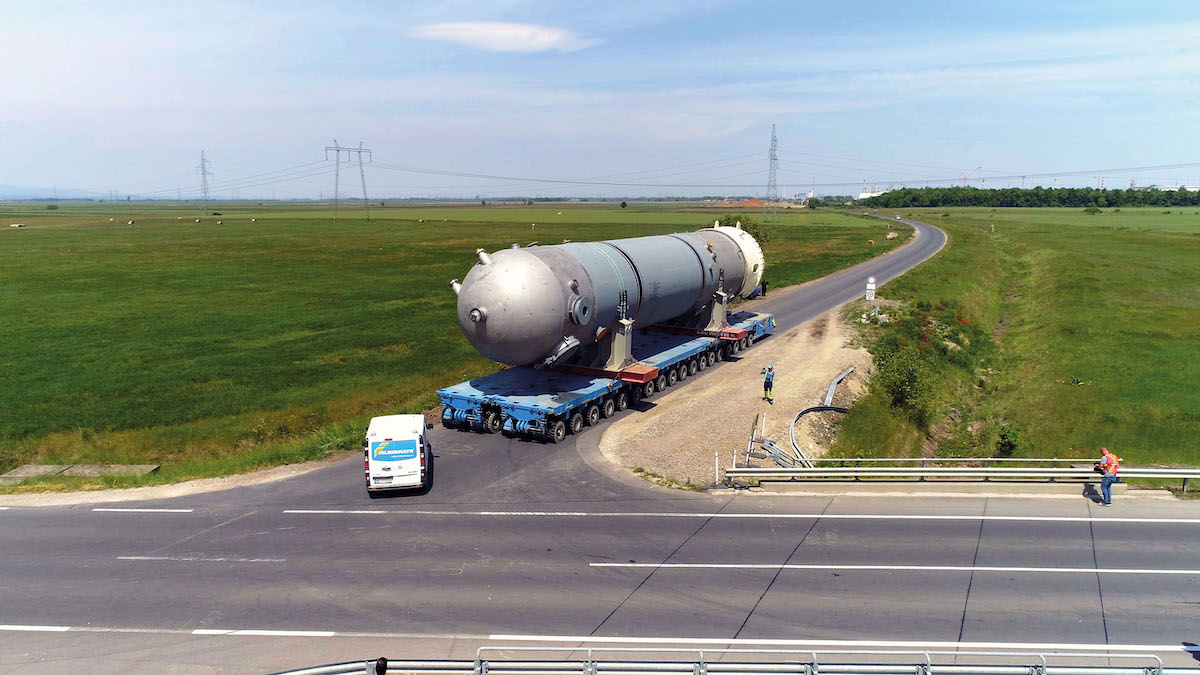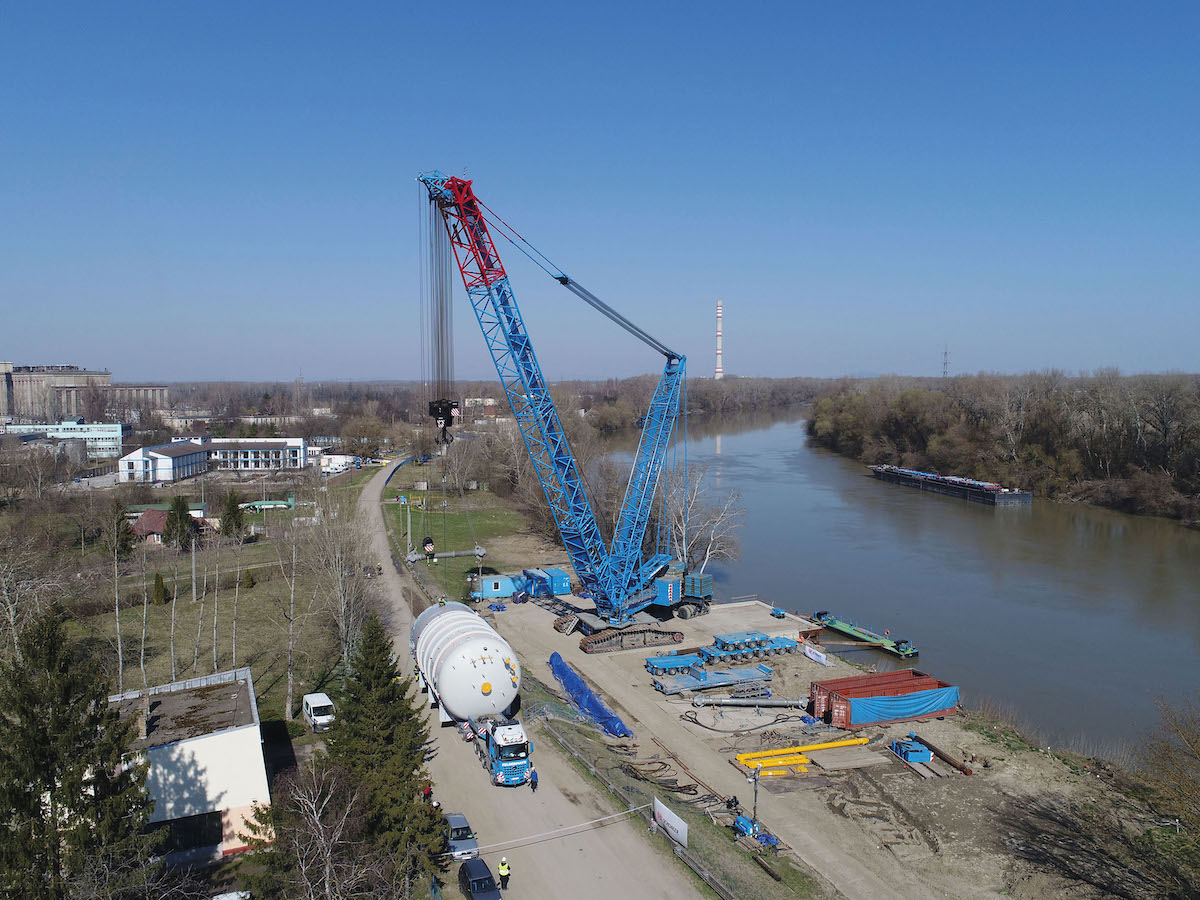River and road transport for refinery project
15 December 2020Austrian special transport and lifting specialist Felbermayr along with its subsidiary companies Bau-Trans and Haeger & Schmidt combined efforts to transport 100 components via road and water to a new refinery in Tiszaújváros, Budapest.
Hungarian oil and gas group MOL is constructing a polyol plant for preliminary products used in the production of plastics. “This is a flagship project for us, in which we can employ almost our entire range of heavy lift logistics,” said Peter Stöttinger, managing director of Felbermayr Transport und Hebetechnik. “Working together with our client, the project department of Schenker Deutschland AG, I began developing a logistics concept for the petrochemical plant around three years ago”.
As the plant is being built “on a greenfield, the first step was to plan the necessary infrastructure. The infrastructure part of the project included a heavy-duty jetty on the River Tisa for inland waterway vessels and a 1,000m long temporary access road from the trans-shipping point to the nearest public road.
Shipment of the various oversized cargo consignments originated in Belgium and Italy. “The shipments from Belgium, for example, were transported by our subsidiary Haeger & Schmidt using inland waterway vessels”, said Stöttinger. This route was completed via the Felbermayr heavy lift terminal in Linz, Austria, including storage when necessary, in order to optimise the logistics.
One example component was a column approximately 30m long and 8m diameter, weighing 200t, it was transported on the company‘s ro-ro capable, heavy-lift Lastdrager 30 along the Danube to the mouth of the Tisa, close to the Serbian town of Titel. Road transport of this column to Tiszaújváros would have been impossible due to the dimensions. It was therefore necessary to select the destination ports of the components according to their dimensions.
The transshipping of roadworthy components onto low loaders took place in the Hungarian Danube ports in Gönyu and Budapest, after which they were transported directly to the construction site. This comprised around 25 special transports; some of these were driven in convoys of up to five vehicles.
Loads from Italy made their way via the Romanian Black Sea port of Constanta. The journey continued via the Danube and Tisa, to the transshipping point in Tiszaújváros.
A Liebherr LR 1750 crawler crane with main and derrick boom as well as ballast wagon was used for the lifts with the steel giants weighing in at several hundred tonnes. “With this equipment, the crawler crane achieved an operating weight of around 1,400t,” said Stöttinger.
Upon arriving at the temporarily constructed port in Tiszaújváros much had been achieved, but the goal had not yet been attained. Two self-propelled modular transporters, each with 18 axle lines and 500 horsepower – were on site at the temporary port in Tiszaújváros to take care of the deliveries. Tractor units with semi low-loaders and vessel beds were used for lighter components weighing up to around 100t.


